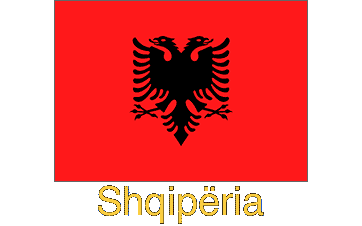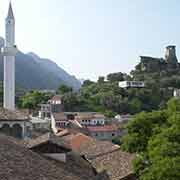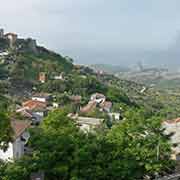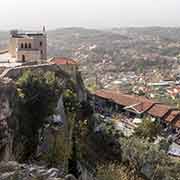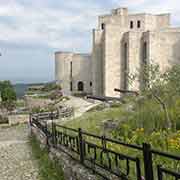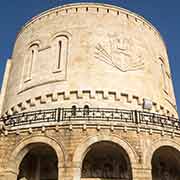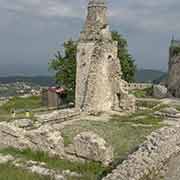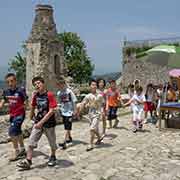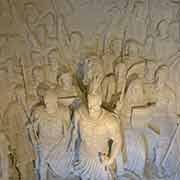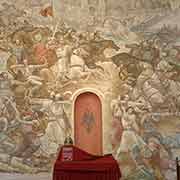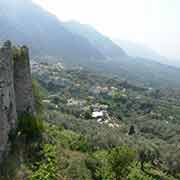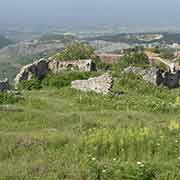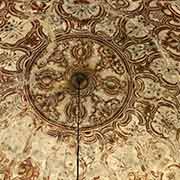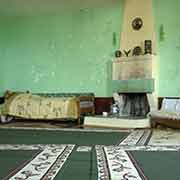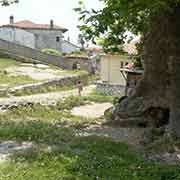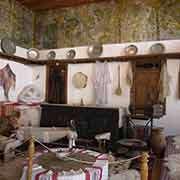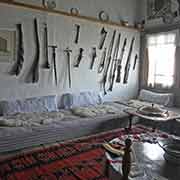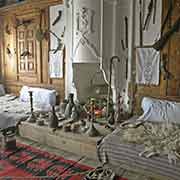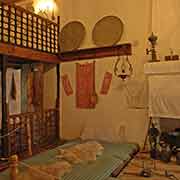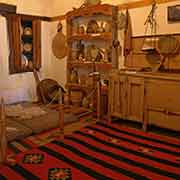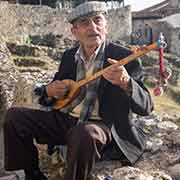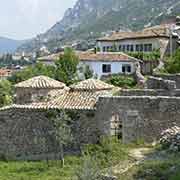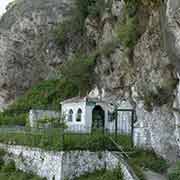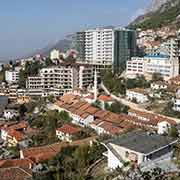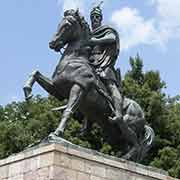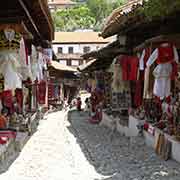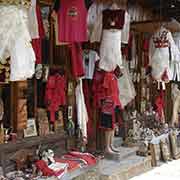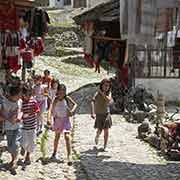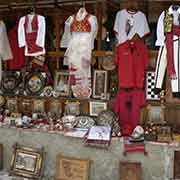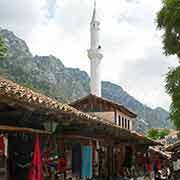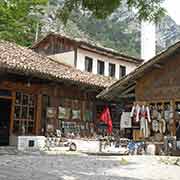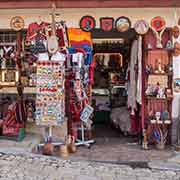Photos from Albania
Kruja, the citadel of Skanderbeg
The small town of Kruja (or Krujë in a sentence with a preposition) is located 32 kilometres northwest of Tirana. It lies at the foot of sheer Mount Kruja (Mali i Krujës), at an altitude of 560 metres with a population of around 16,000. Kruja’s old bazaar is well preserved but now houses mainly souvenir shops where traditional Albanian costumes, musical instruments, old books and memorabilia of the Communist days are for sale. With its cobbled streets and tiny mosques, it is a very photogenic place.
you may then send it as a postcard if you wish.
George Kastrioti (Gjergj Kastriot), born in 1405, was the son of a local ruler. He was taken hostage with his two brothers by the Ottoman Sultan Bayezid I to ensure obedience by their father, who had opposed him. The boy converted to Islam, attended military school, and led many battles to victory. He obtained the title “İskender Bey”, meaning “Lord Alexander”; in Albanian “Skënderbeu”. In 1443, during a battle against the Hungarians, he switched sides with 300 men and trekked to his native Kruja. He captured its castle, converted to Christianity, raised the double-headed eagle flag and fought for many years against the Turks, winning 13 battles until his death in 1466. Kruja eventually fell in 1478, and a year later, Albania was part of the Ottoman Empire.
The citadel or castle of Skanderbeg is built on an isolated spur of the limestone mountain wall of the Kruja range and has spectacular views of the surrounding region. The site is still inhabited and home to a large museum dedicated to Albania’s national hero. Designed by Pranvera Hoxha, Enver Hoxha’s daughter, and Pirro Vaso, his son-in-law, the Skanderbeg Museum displays paintings and replicas of armour. However, Skanderbeg’s original helmet and sword are in a museum in Vienna. On the edge of the spur is the Dolma Teqe, a place of worship for the Bektashi branch of Islam built-in 1789. Bektashism is considered to have blended several Shi’a and Sufi concepts, although the order contains rituals and doctrines that are distinct unto itself. The devotion of Imam Ali is central to Bektashi faith, and a portrait of him is prominently displayed in the main room. Another small “tekke”, the Teqja e Baba Maksurit, is just outside the citadel of Kruja along the path leading into town. A “hammam”, an Ottoman bathhouse, is along the same path. The Kruja citadel also includes the beautifully restored 19th Century house of an affluent Albanian family during the Ottoman epoch that now serves as the Ethnographic Museum. Its rooms are wonderfully preserved, with original furniture, fittings, and weapons hanging on the walls, giving a good impression of life in those days.


